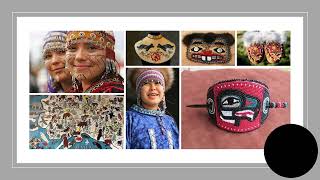Unveiling the Rich Heritage of Alaska Native Art
Unveiling the Rich Heritage of Alaska Native Art
 Unveiling the Rich Heritage of Alaska Native Art
Unveiling the Rich Heritage of Alaska Native Art
Content
• Section 1: The Cultural Tapestry of Alaska Native Art
• Section 2: Artistic Expressions and Techniques
• Section 3: Preserving and Promoting Alaska Native Art
Section 1: The Cultural Tapestry of Alaska Native Art
Page 1.1: Historical Significance
• Cultural Traditions: Alaska Native art is deeply rooted in the rich cultural heritage of indigenous communities, reflecting their spiritual beliefs, connection to nature, and traditional way of life.
• Art as Storytelling: Each piece of art serves as a visual narrative, depicting legends, myths, and historical events, preserving the oral traditions of Alaska Native peoples through intricate designs and symbolism.
• Cultural Preservation: The art forms are a means of preserving and passing down ancestral knowledge, ensuring that the legacy of Alaska Native cultures endures for future generations.
Page 1.2: Artistic Diversity
• Variety of Mediums: Alaska Native art encompasses a wide range of mediums, including woodcarvings, ivory carvings, basketry, beadwork, and traditional clothing, each reflecting the unique cultural identity of different indigenous groups.
• Regional Influences: The art styles and motifs vary across different regions of Alaska, influenced by the distinct natural landscapes, wildlife, and cultural practices of each community.
• Spiritual Significance: Many art forms hold spiritual significance, serving as a means of connecting with the natural and supernatural realms, and embodying the spiritual beliefs and values of the Alaska Native peoples.
Page 1.3: Art as Cultural Expression
• Ceremonial Art: Art plays a central role in ceremonial practices, such as the creation of ceremonial masks, regalia, and dance paraphernalia, serving as a visual representation of cultural identity and spiritual beliefs.
• Community Collaboration: The creation of art often involves the collective effort of community members, fostering a sense of unity, shared identity, and cultural pride within Alaska Native communities.
• Artistic Evolution: While rooted in tradition, Alaska Native art continues to evolve, with contemporary artists blending traditional techniques with modern influences, creating a dynamic and evolving art form.
Page 1.4: Economic and Social Impact
• Economic Empowerment: Alaska Native art serves as a source of livelihood for many indigenous artists, contributing to the economic well-being of their communities and providing opportunities for entrepreneurship.
• Cultural Tourism: The art and crafts produced by Alaska Native artists are a draw for cultural tourism, attracting visitors who seek to experience and appreciate the unique artistic heritage of the region.
• Social Cohesion: The creation and appreciation of art foster social cohesion within Alaska Native communities, serving as a means of cultural expression, communication, and intergenerational bonding.
Section 2: Artistic Expressions and Techniques
Page 2.1: Woodcarvings and Totem Poles
• Symbolism in Woodcarvings: Woodcarvings are adorned with symbolic representations of animals, spirits, and ancestral figures, each carrying profound cultural and spiritual meanings.
• Totem Poles: These towering wooden monuments depict family lineage, clan stories, and cultural symbols, serving as a visual record of the history and traditions of Alaska Native communities.
• Traditional Techniques: The intricate carving and painting techniques used in woodcarvings and totem poles are passed down through generations, preserving the traditional artistry of Alaska Native peoples.
Page 2.2: Ivory Carvings and Sculptures
• Natural Material: Ivory carvings are crafted from walrus tusks and other natural materials, showcasing the artistic skill and creativity of Alaska Native artisans in transforming raw materials into intricate sculptures.
• Depiction of Wildlife: Many ivory carvings depict animals native to Alaska, such as polar bears, seals, and whales, capturing the essence of the region’s wildlife and natural beauty.
• Cultural Symbolism: The carvings often carry symbolic representations of traditional stories, hunting practices, and spiritual beliefs, offering a glimpse into the cultural tapestry of Alaska Native communities.
Page 2.3: Basketry and Weaving
• Functional and Decorative: Basketry and weaving are integral parts of Alaska Native art, serving both functional and decorative purposes, with intricate designs and patterns woven into baskets, hats, and mats.
